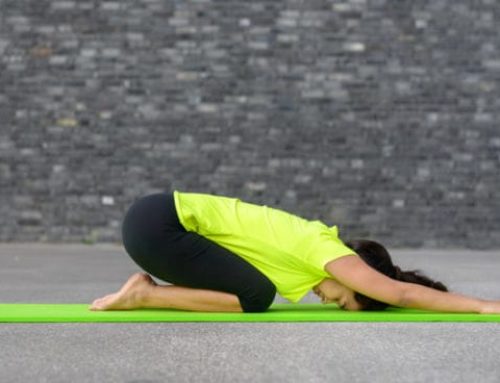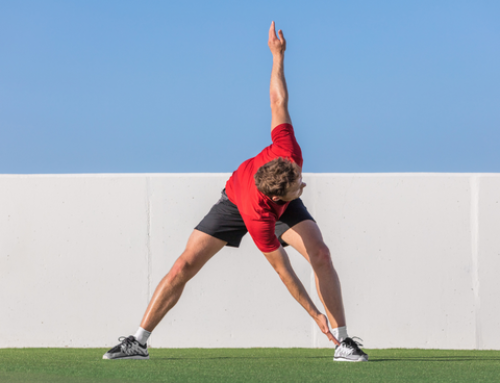Dynamic and Static Stretching: Which Method is Better?
![]()
Both dynamic and static stretching have a place in a pre-workout routine, but unless you’re an experienced coach or trainer, it can be hard to know which one to do in a particular circumstance. To better understand when to implement each method, let’s first get a better understanding of both, then take a look at a sample workout.
RELATED: A Stretching Technique That Increases Muscle Size
Static stretching is long, controlled stretching of a single muscle group—e.g., standing, bending over and holding a hamstring stretch for 30 seconds. This helps to elongate and relax the muscles you are stretching. However, static stretching makes muscles less elastic, which can inhibit their function.
Dynamic stretching is controlled stretching but with movement—e.g, performing slow Walking Lunges. It helps to get blood flowing to your muscles and gets your heart rate up—plus, it increases your core temperature to prepare you for your workout, practice, game or event.
RELATED: Find Out If You Should be Stretching to Increase Flexibility
What to Implement When

Static stretching is safe and effective for making your muscles more pliable; however, it should be performed only after exercise. Research shows that static stretching before a workout decreases performance. When you elongate a muscle with static stretching before a workout, you actually lose your power and explosiveness for approximately 10 minutes.
Too often, I see people at the gym holding hamstring and quadriceps stretches before they go for a run, because that is all they’ve ever known. After a workout, static stretching is ideal. Once your muscles are fatigued, you can go through controlled static stretching to decrease soreness, inflammation and muscle tension while also keeping your muscles pliable.
RELATED: 12 Dynamic Stretches Football Players Must Do
Dynamic stretching should be performed before workouts. The key is to make it sport- or exercise-specific. If you are planning to perform a sprinting workout, go for a light jog beforehand. If you are going for a long-distance jog, take a brisk walk or light jog first. And if you are going to perform a leg day at the gym, including Squats and Lunges with weights, do bodyweight Squats and Lunges beforehand to prepare your muscles.
Dynamic stretching takes a muscle through a range of motion—getting it warmed up without removing elasticity and power.
Sample Dynamic Stretching Routine
- 3-Way Leg Swings (Front, Side, Back) – x10
- Squats – x10
- Side Lunges – x10
- Lunges – x10
- Reverse Lunges – x10
- Hip Openers – x10
- A-Skips – x10
- Frankenstein Walks – x10
- Bounds – x10
- Reverse Bounds – x10
- Inchworms – x20
- Bear Crawls – x20
RECOMMENDED FOR YOU
Dynamic and Static Stretching: Which Method is Better?
![]()
Both dynamic and static stretching have a place in a pre-workout routine, but unless you’re an experienced coach or trainer, it can be hard to know which one to do in a particular circumstance. To better understand when to implement each method, let’s first get a better understanding of both, then take a look at a sample workout.
RELATED: A Stretching Technique That Increases Muscle Size
Static stretching is long, controlled stretching of a single muscle group—e.g., standing, bending over and holding a hamstring stretch for 30 seconds. This helps to elongate and relax the muscles you are stretching. However, static stretching makes muscles less elastic, which can inhibit their function.
Dynamic stretching is controlled stretching but with movement—e.g, performing slow Walking Lunges. It helps to get blood flowing to your muscles and gets your heart rate up—plus, it increases your core temperature to prepare you for your workout, practice, game or event.
RELATED: Find Out If You Should be Stretching to Increase Flexibility
What to Implement When

Static stretching is safe and effective for making your muscles more pliable; however, it should be performed only after exercise. Research shows that static stretching before a workout decreases performance. When you elongate a muscle with static stretching before a workout, you actually lose your power and explosiveness for approximately 10 minutes.
Too often, I see people at the gym holding hamstring and quadriceps stretches before they go for a run, because that is all they’ve ever known. After a workout, static stretching is ideal. Once your muscles are fatigued, you can go through controlled static stretching to decrease soreness, inflammation and muscle tension while also keeping your muscles pliable.
RELATED: 12 Dynamic Stretches Football Players Must Do
Dynamic stretching should be performed before workouts. The key is to make it sport- or exercise-specific. If you are planning to perform a sprinting workout, go for a light jog beforehand. If you are going for a long-distance jog, take a brisk walk or light jog first. And if you are going to perform a leg day at the gym, including Squats and Lunges with weights, do bodyweight Squats and Lunges beforehand to prepare your muscles.
Dynamic stretching takes a muscle through a range of motion—getting it warmed up without removing elasticity and power.
Sample Dynamic Stretching Routine
- 3-Way Leg Swings (Front, Side, Back) – x10
- Squats – x10
- Side Lunges – x10
- Lunges – x10
- Reverse Lunges – x10
- Hip Openers – x10
- A-Skips – x10
- Frankenstein Walks – x10
- Bounds – x10
- Reverse Bounds – x10
- Inchworms – x20
- Bear Crawls – x20











